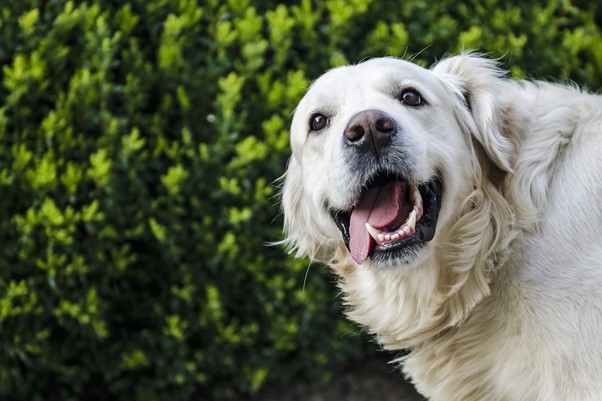Does your dog have swollen red gums and you cannot withstand the choking smell emanating from his mouth? Yes? Then there is a problem with your dog’s oral health.
On average, most vets report that 80% of dogs are most likely to get dental problems when they are three years old.
Some of these dental problems like periodontitis are painful and limit a dog’s quality of life.

However, ensuring that your dog accesses constant oral checkups and regular brushing of teeth is vital in minimizing the occurrence of oral diseases.
With that said, here are some common dental problems common in dogs. Later, you will learn of better ways of maintaining your dog’s oral hygiene.
Common Dog’s Dental Problems
Like other canines, dogs are susceptible to several dental problems. Some are reversible if noted early.
Gingivitis
Gingivitis is a painful inflammatory gum disease common in dogs. With gingivitis, the gums become red and sensitive.
What Causes Gingivitis?
A dog’s mouth is full of bacteria, and If not cleared away, these bacteria combine with saliva and food particles to form a slimy biofilm called plaque.
This plaque can take a week to develop, and if not cleared away, the plaque coats the dog’s teeth to form a hard yellow substance known as tartar.
Moreover, this tartar produces enamel dissolving substances that inflame your dog’s gum.
If not treated, gingivitis escalates to periodontitis.
Periodontitis
Periodontitis is the aftermath of untreated gingivitis.
Periodontitis presents by inflammation and the infection of gums that support the teeth.
With periodontitis, the gum loses its function and often leads to tooth loss.
Trauma of the Teeth
Another dog’s teeth problem is trauma- characterized by broken or cracked teeth. A hard impact, for example, chewing a hard object can cause your dog to have teeth trauma.
With broken teeth, the nerves get exposed, thus leading to painful sensations.
You can minimize the occurrence of broken teeth by inspecting what your dog is biting or chewing.
Teeth Misalignment
Malocclusion of teeth misalignment is common in a small breed of dogs. Often occurs when the dog’s teeth of the upper and lower jaw mis-align. Although prevalent, it’s not a life-threatening condition.
Unless painful or causing loss of appetite, this condition is never life-threatening. If it’s in the genes, a breeder can neuter or spay the affected dog to prevent the inheritance of such a defect.
Halitosis
Often presented by an awful smell emanating from your dog’s mouth. Bad breath (halitosis) often results from a buildup of bacteria or other underlying conditions like diabetes.
Always monitor your dog’s mouth for any awkward smell.
Major Warning Signs of Dog’s Dental Problems
- Bad breath
- Discolored teeth
- Pawing at the mouth
- Loss of appetite
- Drooling
- Missing teeth
- Growth on the gums
- Depression
- Blood on the feeding bowl
Dog’s Dental Hygiene (Ways to Keep Your Dog’s Teeth Clean)
There are various ways to keep your dog’s teeth sparkling clean. Below are some obvious options that are easy to implement.
Brushing Teeth
Brushing your dog’s teeth will come a long way in keeping your dog’s teeth and free of dental problems.
Caution, don’t use human toothpaste as it contains fluoride which is poisonous to dogs- consult your vet on the best vet-approved toothbrush and toothpaste.
A point to note, always start brushing your dog’s teeth when he’s a puppy. With that, the dog will grow into an adult who embraces this grooming process.
Regular brushing will help in kicking out any plaque or food particles that may harbor bacteria.
Safe Chew Toys
Is your dog not comfortable with you touching its teeth? No? Then consider using safe chew toys. I prefer hard rubber toys with grooves as they are less likely to hurt your dog.
Consequently, some of the toys are laced with baking soda that keeps away that gagging smell from your dog’s mouth.
Dog Food
The type of food you give your dog will go a long way in keeping any dental problems at the bar. Dog’s dry food is better off than wet food as they don’t stick in between the teeth. Alternatively, dry food is abrasive and helps scrub your dog’s teeth.
Regular Veterinary Examination
Regular examination by your vet is vital for your dog. A dog dentist will be in a better position to examine anything out of place on your dog oral cavities. Whether it’s that awful smell, swollen gums or even broken teeth, the vet will be in a better position to single out any abnormality.
A vet will help clean your teeth with precision to remove any plaque or calculus.
Frequently Asked Questions:
1. Are Small Dogs More Prone To Dental Problems?
-Yes, small dogs are more prone to dental problems. Often because of the physicality of their mouth.
Note: It’s advisable to take your small dog for an annual oral examination twice a year.
2. How Often Should You Brush Your Dog’s Teeth?
–Oral hygiene is vital for every dog. Always brush your dog’s teeth 2-3 times a week.
Use vet-approved toothbrush and toothpaste.
3. What Are the Major Dog’s Dental Problems?
-Common dog oral problems are gingivitis, periodontitis, bad breath, malocclusion, stomatitis (rare).
Conclusion
Dogs are susceptible to various dental problems. Overall, how you maintain your dog’s dental hygiene will come a long way in preventing the occurrence of any serious oral issues.
Tell us in the comment box, how many times do you brush your dog’s teeth? And which of the outlined dog dental problems have you ever come across.
